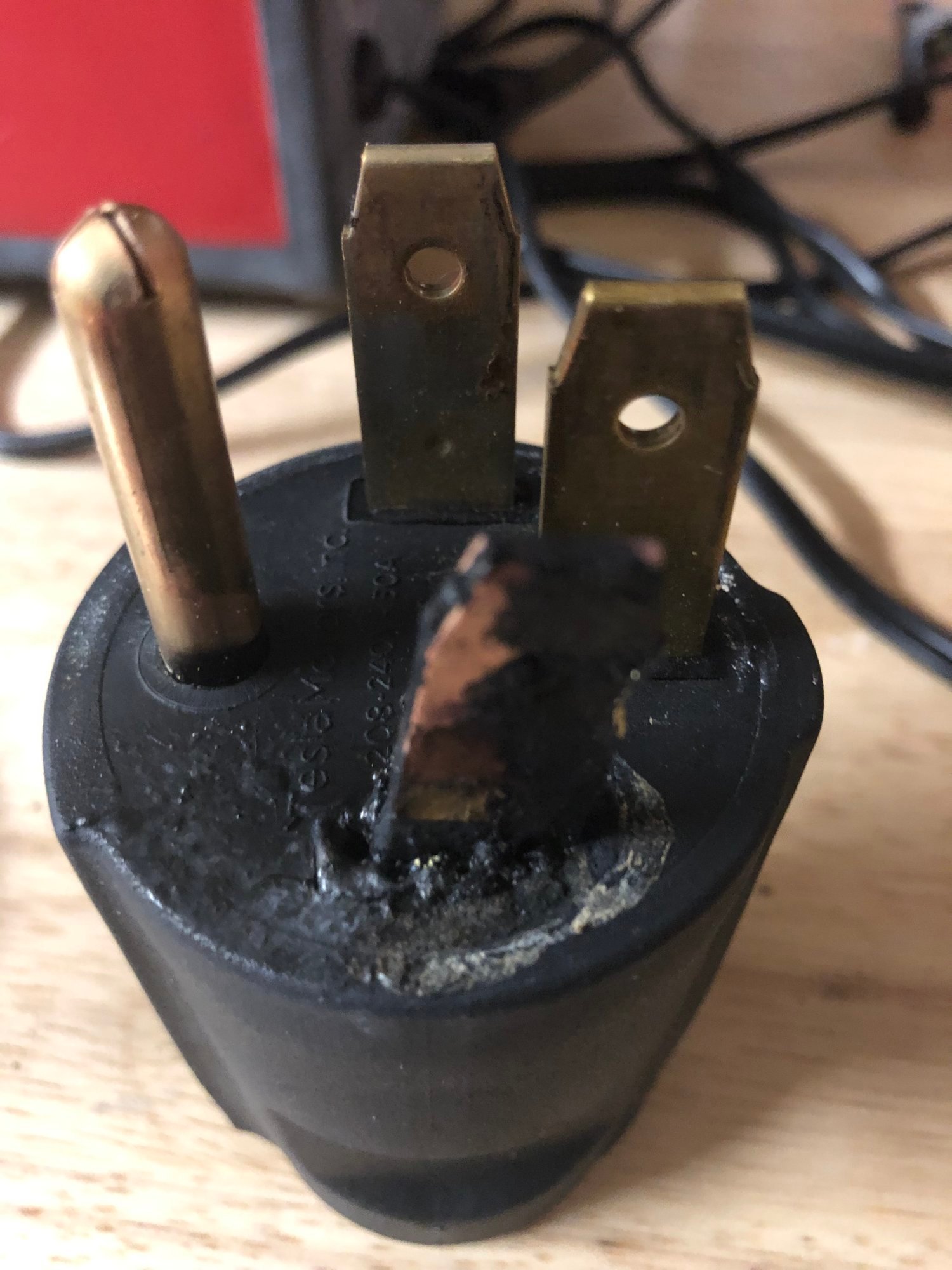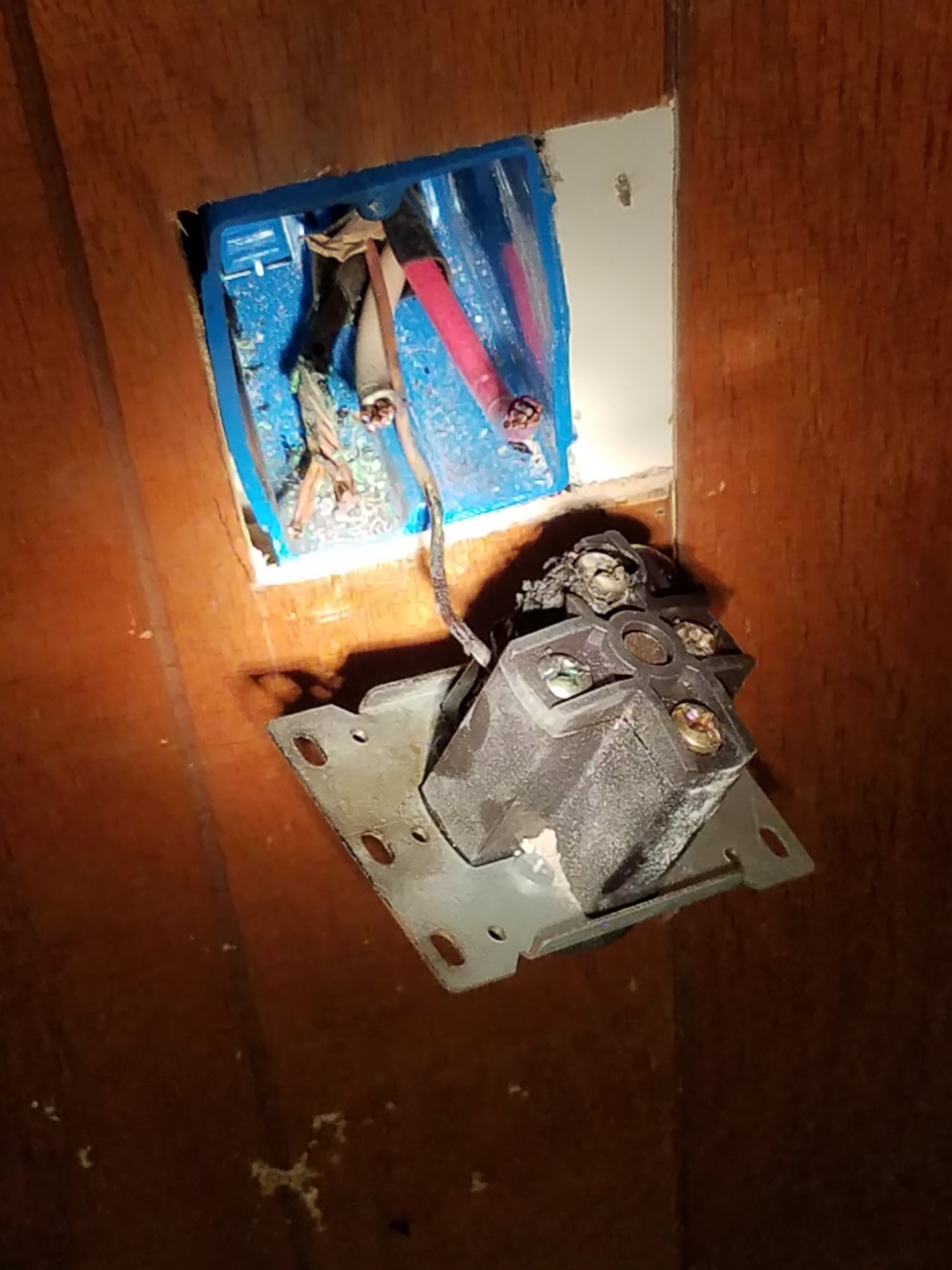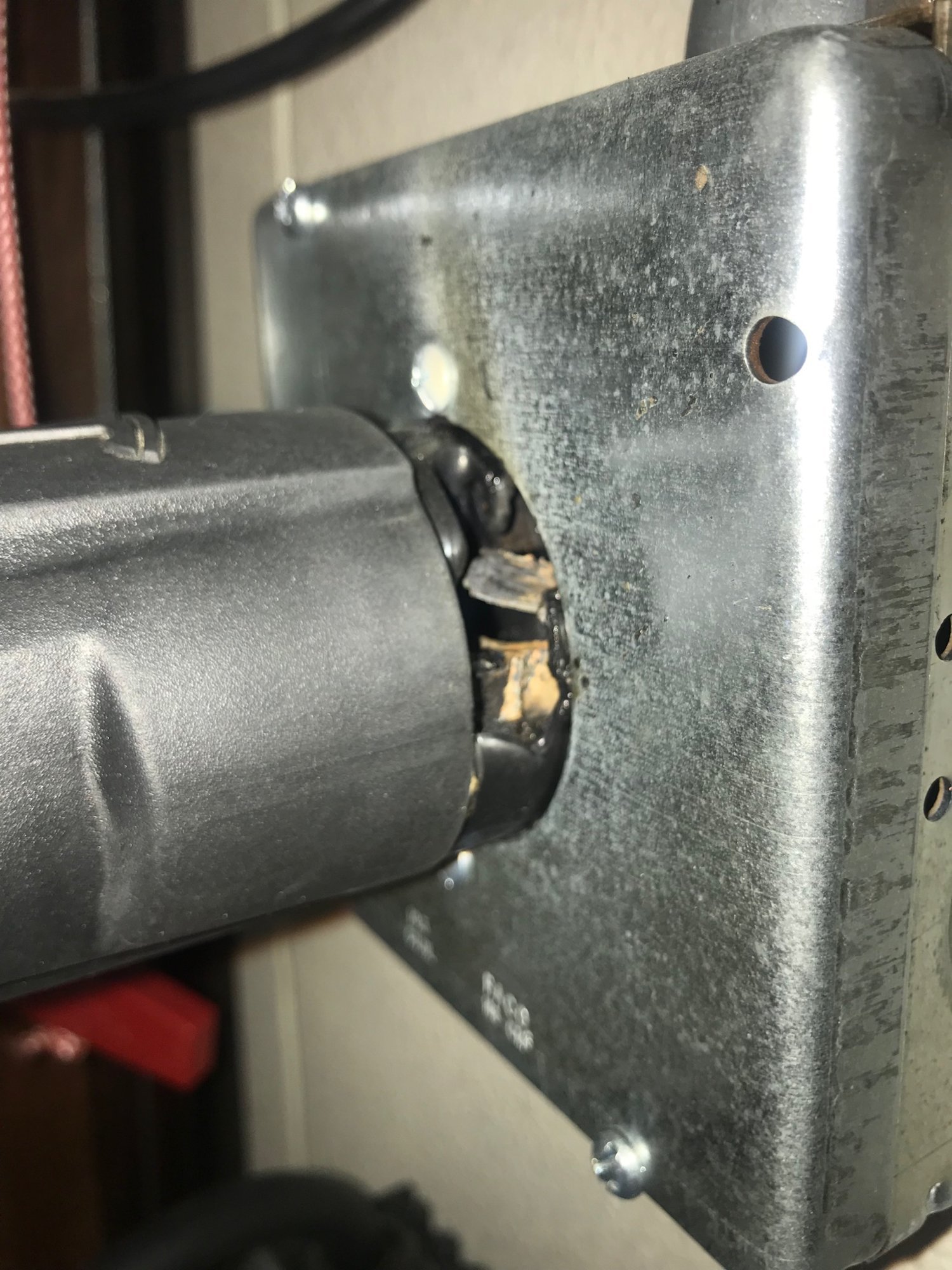Correct; If the circuit will be terminated with a receptacle, i.e. not hard wired to the electric vehicle service equipment (EVSE), then per the latest update to the NEC a GFCI is required. If the 50A circuit, 14-50 receptacle is for an oven or an RV then a GFCI is not required. (BTW this is now the case with any new circuit with a receptacle installed for charging a plug-in vehicle, not just a 50A circuit.)Sorry to tack on to this thread, but am I reading correctly that if I install a 50a circuit for a 14-50 outlet that the breaker needs to be a GFCI vs a non GFI one?
E.g., something like this? BR250SUR - Eaton Cutler-Hammer 50 Amp 2 Pole BR Breaker with Surge ProtectionDefault Title
Welcome to Tesla Motors Club
Discuss Tesla's Model S, Model 3, Model X, Model Y, Cybertruck, Roadster and More.
Register
Install the app
How to install the app on iOS
You can install our site as a web app on your iOS device by utilizing the Add to Home Screen feature in Safari. Please see this thread for more details on this.
Note: This feature may not be available in some browsers.
-
Want to remove ads? Register an account and login to see fewer ads, and become a Supporting Member to remove almost all ads.
You are using an out of date browser. It may not display this or other websites correctly.
You should upgrade or use an alternative browser.
You should upgrade or use an alternative browser.
Thoughts on this install for a 14-50 install with subpanel.
- Thread starter Spikeitaudi
- Start date
I don't know the rules in Canada, but that doesn't look like a GFCI breaker, aside from the curly neutral pigtail.Sorry to tack on to this thread, but am I reading correctly that if I install a 50a circuit for a 14-50 outlet that the breaker needs to be a GFCI vs a non GFI one?
E.g., something like this? BR250SUR - Eaton Cutler-Hammer 50 Amp 2 Pole BR Breaker with Surge ProtectionDefault Title
Thanks, will double check the rules but either way having GFCI sounds like a good plan given the risks. This is probably the right one....https://www.lowes.ca/product/circuit-breakers/eaton-type-br-50-amp-2-pole-gfci-circuit-breaker-31894
Have also heard you can install GFCI outside of the panel on a separate box?
The above is what a local electrician is quoting for installing a 14-50. I am asking him to specify brand/make of the NEMA outlet and breaker that will be used.
Asked him to install 4AWG just in case I wanted to move up later to a 60amp, looks like he's quoting 3?
Have also heard you can install GFCI outside of the panel on a separate box?
Install a NEMA14-50 outlet in garage middle wall for EV Charger and #3 AWG armoured conductor. Rearrange existing breaker on panel to accommodate for new outlet.
The above is what a local electrician is quoting for installing a 14-50. I am asking him to specify brand/make of the NEMA outlet and breaker that will be used.
Asked him to install 4AWG just in case I wanted to move up later to a 60amp, looks like he's quoting 3?
There are indeed GFCI outlets or other GFCI doodads(no outlet, just a device that protects all later outlets on the chain) that you can install in a separate 'box', but those are only for low-current purposes(15-20amp, 120V). You could certainly put in a subpanel to contain the GFCI for your 14-50, if you have some desire for a subpanel.Thanks, will double check the rules but either way having GFCI sounds like a good plan given the risks. This is probably the right one....https://www.lowes.ca/product/circuit-breakers/eaton-type-br-50-amp-2-pole-gfci-circuit-breaker-31894
Have also heard you can install GFCI outside of the panel on a separate box?
The above is what a local electrician is quoting for installing a 14-50. I am asking him to specify brand/make of the NEMA outlet and breaker that will be used.
Asked him to install 4AWG just in case I wanted to move up later to a 60amp, looks like he's quoting 3?
Yes, its curious he's quoting 3, when even 4 is overkill for 60 amp(presuming its in 'armored' conduit). #3 in conduit is good for 100amps!
sleepydoc
Well-Known Member
My understanding is that the outlet simply needs to have GFCI protection; it doesn't specify how. There are no 30-40-50A GFCI outlets. but you can absolutely have a disconnect box or a sub panel right next to the outlet with a GFCI breaker in it and that should satisfy the requirement. It would end up costing more, though, since you'd still need the space and breaker at the main panel.
They do make in-line GFCI cables for 120V 15/20A. I've never seen one for 240V or higher average. Regardless, such a device wouldn't satisfy the code requirement.
As far as upgradability, you can use larger wire but 60A is really overkill for a home charger. To charge a model Y from 0-100% it would drop the charge time from about 8 hours to 7 hours. Not really significant in terms of real world use.
They do make in-line GFCI cables for 120V 15/20A. I've never seen one for 240V or higher average. Regardless, such a device wouldn't satisfy the code requirement.
As far as upgradability, you can use larger wire but 60A is really overkill for a home charger. To charge a model Y from 0-100% it would drop the charge time from about 8 hours to 7 hours. Not really significant in terms of real world use.
Installed thinking more down the line should I add a second EV, having more amps might be better? The quote was actually pretty good compared to a couple others I've seen (using 8 gauge and a 40amp breaker vs 50), so have some questions / confirmations going back.My understanding is that the outlet simply needs to have GFCI protection; it doesn't specify how. There are no 30-40-50A GFCI outlets. but you can absolutely have a disconnect box or a sub panel right next to the outlet with a GFCI breaker in it and that should satisfy the requirement. It would end up costing more, though, since you'd still need the space and breaker at the main panel.
They do make in-line GFCI cables for 120V 15/20A. I've never seen one for 240V or higher average. Regardless, such a device wouldn't satisfy the code requirement.
As far as upgradability, you can use larger wire but 60A is really overkill for a home charger. To charge a model Y from 0-100% it would drop the charge time from about 8 hours to 7 hours. Not really significant in terms of real world use.
If you are expecting a likely second EV, you should just bite the bullet and put the subpanel in, on #3 wire. You can't just stick two 14-50's hanging off a single breaker, and #3 wire won't even fit in most 14-50's anyway. Have you done the load calculations to see if your main panel can even support another 80 amps of continuous load? Many probably can't.Installed thinking more down the line should I add a second EV, having more amps might be better? The quote was actually pretty good compared to a couple others I've seen (using 8 gauge and a 40amp breaker vs 50), so have some questions / confirmations going back.
You might want to consider dual HPWCs, so they can manage the power sharing for you, and you can avoid the $100+ cost of each GFCI breaker.
Thanks, wonder if Gfci isn't required in Ontario Canada yet. Electrician replied "no GFCI protection is needed as I'm installing the outlet on the middle wall of your garage, away from the garden house on your wall. The outlet would be Leviton NEMA 14-50. I'm either running a conduit or a teck cable as the wire needs to be mechanically protected.".
As for a second EV, I'm still debating a first (range anxiety and keep wondering if in a few months a newer longer range Y will be out). But just figure in 5 years or more it's highly likely. But yeah I doubt even my 200amp panel will take it since I have two stoves, pool equipment, 2 Air Conditioners... And lots of high amperage home theater equipment. So will likely need to upgrade but that's several years away.
As for a second EV, I'm still debating a first (range anxiety and keep wondering if in a few months a newer longer range Y will be out). But just figure in 5 years or more it's highly likely. But yeah I doubt even my 200amp panel will take it since I have two stoves, pool equipment, 2 Air Conditioners... And lots of high amperage home theater equipment. So will likely need to upgrade but that's several years away.
Might want to reconsider the LevitonThe outlet would be Leviton NEMA 14-50.
Make sure to install a Hubbell or Bryant brand receptacle instead of a cheap Leviton brand receptacle.
Good price on Zoro: Bryant 9450FR $34.33 50A 4W Single Receptacle 125/250VAC 14-50R BK | Zoro.com
Why: NEMA 14-50 Plug Meltdown / Near Fire
I would go with plan A. It is safer, more reliable, can charge the vehicle more quickly depending on the circuit it's connected to, and allows you to keep the mobile connector in your car for emergencies.
If you go with plan B, make sure to adjust your price on the NEMA 14-50R, as it appears that you've budgeted for a Leviton model, which are cheap and known to cause fires. Budget $80 for a Bryant or Hubbell brand receptacle, both of which have much better build quality and electrical connections. New plan B price: $450.

NEMA 14-50 Plug Meltdown / Near Fire
My main house breaker tripped tonight. Upon investigating, I saw black smoke curling up my garage wall and smelled burning plastic, from where my 14-50 plug is located. Turns out my electrician had installed the plug with a loose black conductor, causing the outlet and plug to meltdown. At...teslamotorsclub.com

My NEMA 14-50 nearly caught on fire Friday night!
Saturday morning I got up to find that charging was interrupted overnight. I went to the garage and was hit with that burning electrical odor - very strongly. I unplugged the charger from the wall (it took a bit of doing), and saw that one of the side-by-side prongs had plastic from the...teslamotorsclub.com

NEMA 14-50 Meltdown
A couple of nights ago I heard a loud pop inside our house complete with lights flickering. I went downstairs to the garage and found the garage with smoke and stinking of electrical smell. I noticed the Tesla was not longer charging and the breaker was tripped. Upon further inspection I...teslamotorsclub.com
sleepydoc
Well-Known Member
It depends on whether your locality follows the National Electric code, but all garage outlets need to be GFI protected since the 2008 revision.Thanks, wonder if Gfci isn't required in Ontario Canada yet. Electrician replied "no GFCI protection is needed as I'm installing the outlet on the middle wall of your garage, away from the garden house on your wall.
Scary stuff. Zoro doesnt ship to Canada...will have to see if I can find the Bryant or Hubell locally.Might want to reconsider the Leviton
Y'know, if you can't find a reasonable deal in Canada, I imagine some member would be kind enough to forward a box from Zoro. It also looks like Zoro has instructions on how to use www.myus.com to do package forwarding.Scary stuff. Zoro doesnt ship to Canada...will have to see if I can find the Bryant or Hubell locally.
Why a 14-50? That’s a total waste of money, unless you thought you may one day charge at 120v @40A. If you plan on charging at 240v then do not pay for 3 cores when you only use 2.
A 6-50 is a much better install. Less cable, less cost, smaller conduit, less cost. Easier installation, less time, less cost. Unless you have a founders UMC that only had a 14-50 adaptor then just get the 6-50 adaptor.
A 6-50 is a much better install. Less cable, less cost, smaller conduit, less cost. Easier installation, less time, less cost. Unless you have a founders UMC that only had a 14-50 adaptor then just get the 6-50 adaptor.
Similar threads
- Replies
- 5
- Views
- 406
- Replies
- 1
- Views
- 961
- Replies
- 32
- Views
- 3K
- Replies
- 60
- Views
- 15K


